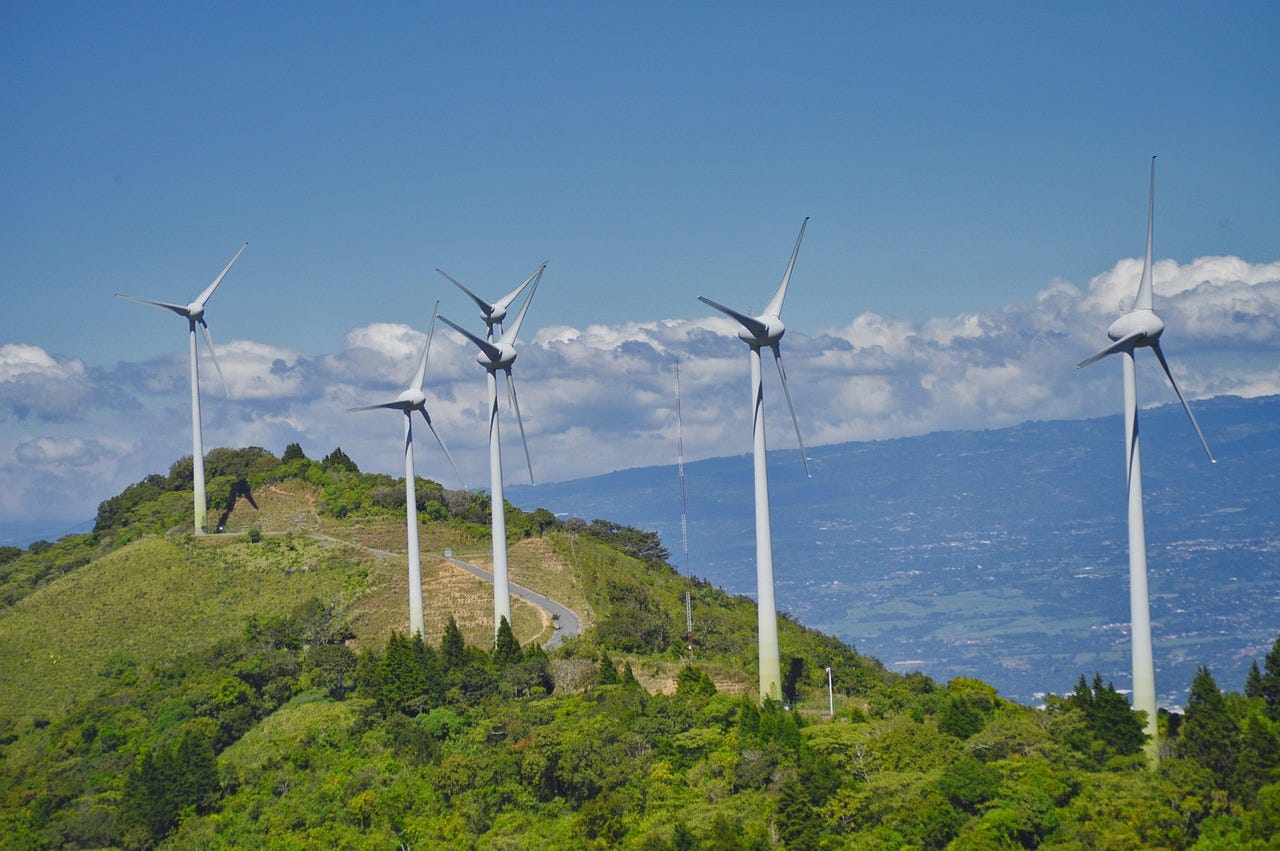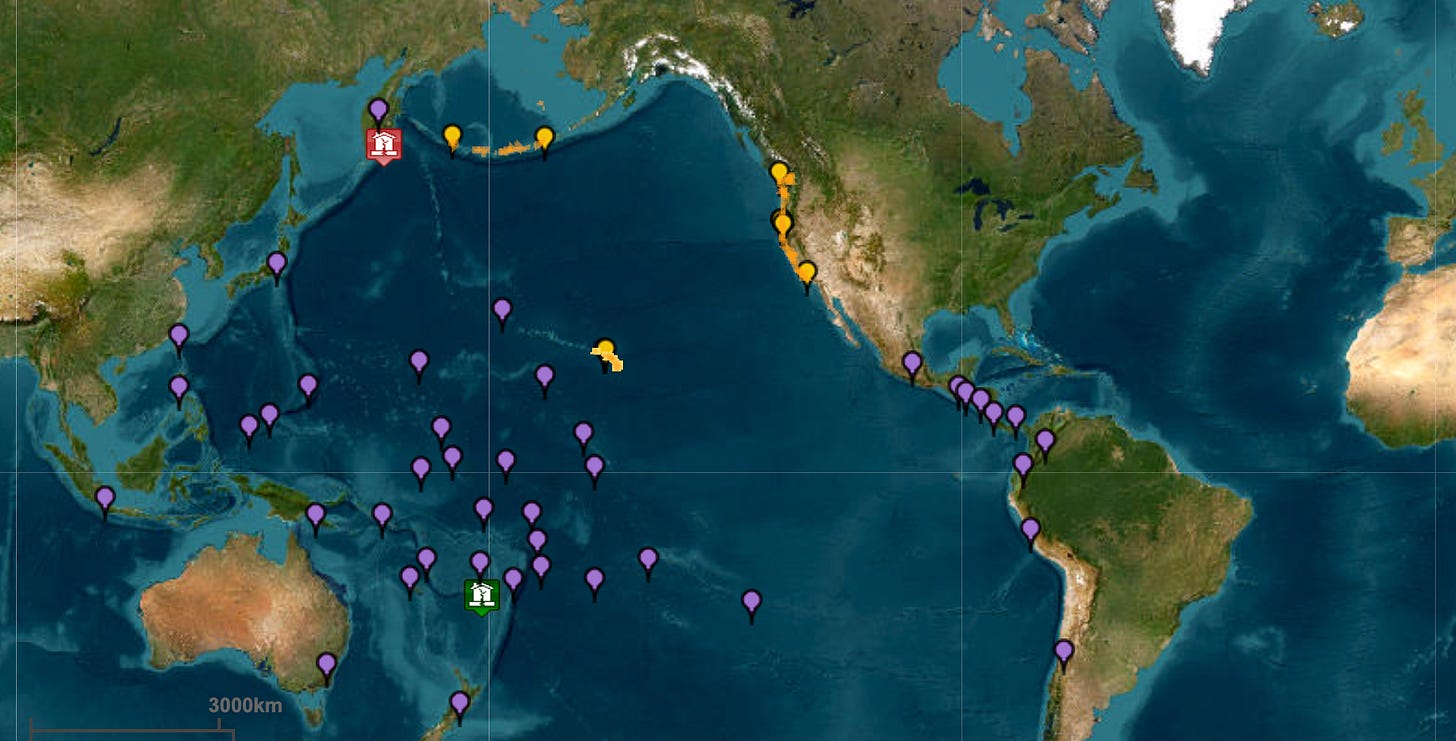Surging clean energy, especially nuclear, will stop the rise of emissions next year
Welcome to Callaway Climate Insights, your daily guide to global climate finance. Has this report been shared with you? Please subscribe with the links below.
Today’s edition of Callaway Climate Insights is free for all our readers. We really want to bring you the best and latest in climate finance from around the world. Please subscribe now.

Surging energy demand for data centers and the renewable energy behind it will lead to total global carbon emissions finally hitting a plateau later this year or next, no thanks to fossil fuels or the White House.
As the data center frenzy spurs second quarter tech earnings — and stocks — to new highs this week, it’s the energy mix behind the electricity created for them that is the real story, according to our reading of the International Energy Agency’s half-year report.
In the U.S. — despite the White House attack on renewables — clean energy growth is expected to just about top coal this year as demand jumps by more than 2%, double the average energy demand of the last decade, the IEA report said.
But in Asia and especially China, which represents about half of the 3.3% jump in global demand, renewables are doing even better. Chalk part of it up to growth in usage of nuclear energy, and in Japan restarting some of its reactors more than a decade after the Fukushima disaster.
As both the IEA report and second-quarter earnings show, it is markets, not policy, that are driving the renewable transition. Policymakers can help them or fight them, but business demand is the ultimate decision maker when it comes to energy.
Don’t forget to contact me directly if you have suggestions or ideas at dcallaway@callawayclimateinsights.com.
Follow us . . . .
Twitter | LinkedIn | Facebook | Instagram
Zeus: The tsunami everyone ignores
. . . . This week’s tsunami thankfully left California alone but also left us wondering why people panic so much about tsunamis but not the generational wave of fires, floods, rains and heat that is slowly endangering the world, writes David Callaway. Turns out there are two — maybe three — specific reasons tsunamis are so much scarier than climate change, though as disasters and losses from global warming pile up, the waves are looking more and more similar.
Editor’s picks: The U.S. heat crisis; plus, Japan’s record-high heat
Watch the video: This BBC documentary highlights the U.S. heat crisis, and urgent scientific warnings about tipping points like the thawing of Arctic permafrost that could accelerate global warming. It also showcases global efforts to reduce emissions, the growth of renewable energy technologies, and the crucial role individuals and societies play in preventing further damage.
Japan swelters in record-breaking heat
More than 10,800 people in Japan went to the hospital for heat exhaustion and heat-related illnesses last week during record high temperatures. At least 16 people died, the country’s Fire and Disaster Management Agency said. Last week, Japan recorded its hottest day on record: Temps hit 106.16°F in Tamba city, about 350 miles southwest of Tokyo, on Wednesday. That beat the previous record of 105.9 set in 2018 and matched in 2020. Japan’s national broadcaster, NHK, said heat advisories and warnings were issued for 33 of Japan’s 47 prefectures. Wednesday’s record-breaking heat followed Japan’s hottest June on record, when temps were 36.21°F above normal. Japan experienced its hottest year in 2024, as average temps broke records for a second consecutive year.
Latest findings: New research, studies and projects
Climate stress tests for banks
In this research paper titled Transparency and Real Effects of Climate Stress Tests for Banks, the authors examine whether microprudential climate stress tests affect banks' reporting choice, loan portfolios, and environmental performance. With heightened awareness and better data, the authors said, they expect incentivized banks to expand transparency, adjust lending standards, and reduce their loan exposure to climate risks. Focusing on the 230 largest European banks from 2017 to 2022, the research found that participants in supervisory climate stress tests significantly increase their transparency, mainly if they have previously shown commitment to climate issues, face outside ESG pressure, or are more exposed to climate risks. From the abstract: “Our results suggest that, while on average we find no effects, supervisory stress tests can act as change agents and elicit feedback effects for banks facing strong climate-related incentives, impose funding and investment constraints on high-risk borrowers, but also trigger (unintended) substitution to less committed and less tightly regulated banks.” Authors: Jannis Bischof, University of Mannheim - Accounting and Taxation; Vincent Giese, University of Mannheim - Accounting and Taxation; TRR 266 Accounting for Transparency; Luzi Hail, University of Pennsylvania - The Wharton School, and European Corporate Governance Institute (ECGI); Gerrit von Zedlitz, University of Mannheim; TRR 266 Accounting for Transparency
More of the latest research:
Words to live by . . . .
“I was rich, if not in money, in sunny hours and summer days.” — Henry David Thoreau.





I think there's something wrong with the investors in cryptocurrencies. They think when the climate crisis is making news, cryptocurrency will be more valuable?